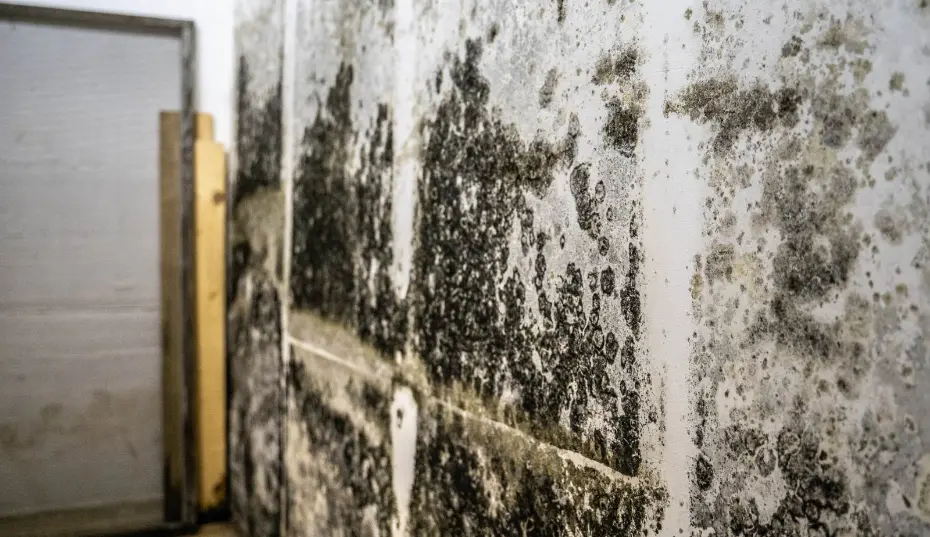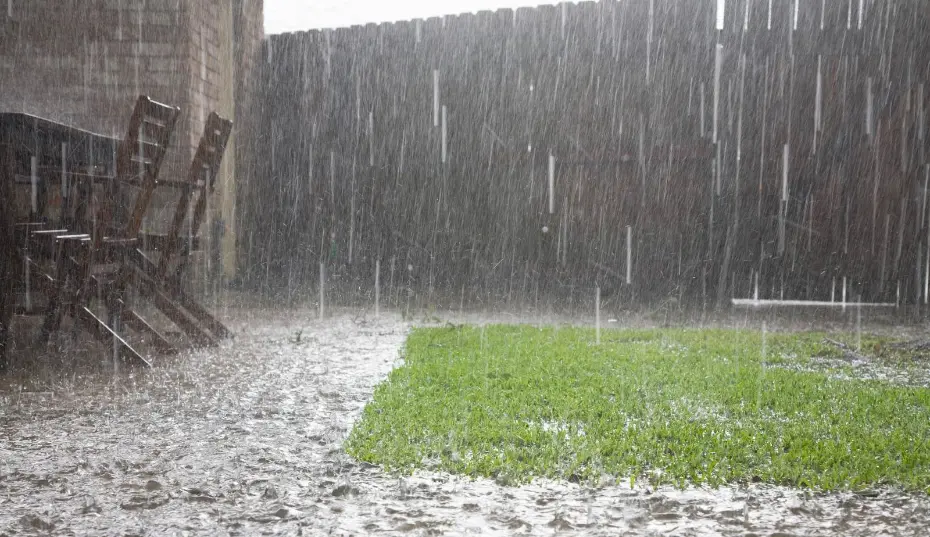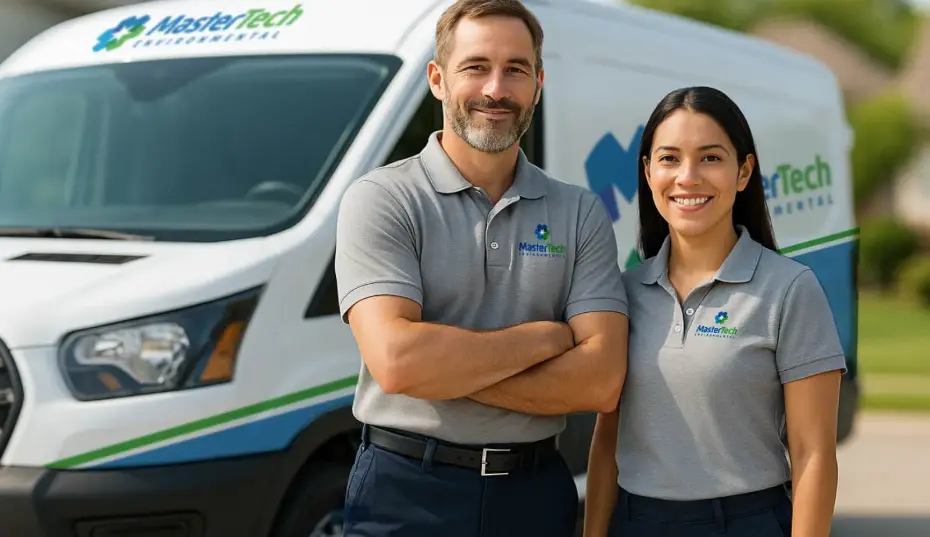Virginia Beach homes are particularly susceptible to mold growth after storms due to the region's humid climate and proximity to water. The primary causes of mold in these residences include water intrusion from heavy rainfall, flooding, and elevated indoor humidity levels. When homes are exposed to excess moisture, mold spores can settle and proliferate, leading to potential health risks and property damage if not addressed promptly.
In the aftermath of storms, homeowners often overlook the importance of swift water removal and effective ventilation. As water seeps into walls, floors, and basements, it creates the perfect environment for mold to thrive. Even minor leaks can compound the problem, especially in humid conditions typical of Virginia Beach.
Mastertech Environmental offers valuable insight into these issues, emphasizing the need for proactive measures to prevent mold growth. Understanding the specific conditions that foster mold can help residents safeguard their homes and well-being in this coastal area.
How Storms Trigger Mold Growth in Virginia Beach
Storms in Virginia Beach create ideal conditions for mold growth. The heavy rain, high humidity, and subsequent water intrusion can set the stage for mold spores to proliferate rapidly if not addressed promptly.
Role of Heavy Rain and Flooding
Heavy rain is a primary contributor to mold growth. When storms roll through Virginia Beach, significant rainfall can lead to flooding. Water saturation in homes creates an environment where mold spores can thrive, especially in porous materials.
Floodwaters act like sponges, absorbing moisture into walls, carpets, and other surfaces. Mold can begin to grow within 24 to 48 hours of exposure to moisture. Addressing flooding quickly is crucial. If not removed, mold can cause health issues and structural damage over time.
Impact of the Humid Climate
Virginia Beach's humid climate further exacerbates mold growth post-storm. Even after rain has stopped, the humidity remains elevated, providing a continuous source of moisture. This stagnant moisture allows mold spores to flourish indoors.
The summer months typically bring peak humidity levels. Homes sealed for air conditioning can trap this moisture, creating a breeding ground for mold. Property owners must monitor indoor humidity levels, ideally keeping them below 50%, to inhibit mold proliferation.
Storm-Related Water Intrusion Points
Water intrusion can occur at multiple points during storms. Common areas include roofs, windows, and foundations, where gaps can allow rainwater to enter.
Porous materials such as drywall and insulation suck up water, making them susceptible to mold growth. Even minor leaks can introduce enough moisture to contribute to mold issues.
It's essential for homeowners to inspect these vulnerable areas regularly, ensuring that repairs are made to prevent future water intrusion. Quick action after a storm can mitigate potential mold damage, safeguarding both health and property.
Key Conditions That Promote Mold After Storms
Storms often create ideal environments for mold growth in homes. Key conditions include moisture accumulation, high humidity, and the potential for hidden mold in concealed areas. Understanding these factors can help homeowners take proactive measures against mold infestation.
Moisture Sources and Humidity
Moisture is the primary catalyst for mold growth. After storms, water can infiltrate homes through leaks, flooding, or even minor drips from damaged roofs.
Sources of moisture commonly found post-storm include:
- Roof leaks: Water can penetrate through holes or gaps.
- Flooding: Even minimal flooding can saturate materials, leading to dampness.
- Condensation: Warm air meeting cooler surfaces creates moisture.
High humidity levels, often resulting from stormy weather, further enhance mold potential. When humidity exceeds 60%, mold spores are more likely to settle and multiply.
Hidden Mold in Concealed Spaces
Mold often hides in unseen areas, making it difficult to detect until significant damage occurs. Concealed spaces like attics, basements, and behind walls can harbor mold if moisture enters.
Key areas where hidden mold thrives include:
- Behind drywall: Water can seep in without clear signs.
- Under carpets and flooring: Flooding can lead to dampness trapped under surfaces.
- In HVAC systems: High humidity can encourage mold growth in ducts.
Recognizing these areas where moisture can linger is crucial for effective mold prevention. Regular inspections and moisture management are essential.
Vulnerable Home Areas Post-Storm
Certain areas of a home are more susceptible to mold growth after storms. Understanding these vulnerable spots can guide homeowners in their prevention efforts.
Common vulnerable areas include:
- Basements and crawl spaces: Often damp and poorly ventilated.
- Attics: Vulnerable to roof leaks and moisture buildup from warm, humid air.
- Kitchens and bathrooms: These areas frequently encounter water but may not be well-ventilated.
Immediate actions, such as drying these spaces promptly and improving ventilation, can significantly reduce the potential for mold growth.
Recognizing the Signs of Mold Problems
After storms, homeowners in Virginia Beach should be vigilant about recognizing mold issues. Identifying these problems early can help mitigate health risks and property damage.
Visible Mold and Water Damage
Visible mold growth can appear in various colors, including black, green, white, or brown. Homeowners should closely inspect areas affected by water damage, such as walls, ceilings, and floors. Staining or discoloration on surfaces may indicate moisture intrusion.
Mold often thrives in damp spaces. Common locations to check include basements, attics, and behind appliances.
If mold grows in hidden areas—like wall voids—it might go unnoticed until substantial damage occurs. Mold spores can also become airborne, spreading rapidly throughout the home.
Noticing Musty Odors
A musty odor is often the first sign of mold presence. This earthy smell typically indicates mold growth within hidden spaces. Homeowners should not ignore these odors, as they often suggest an underlying moisture problem.
Odors may linger in affected areas, such as basements or around water-damaged spots. Even if no mold is visually apparent, persistent musty scents warrant immediate investigation.
It’s essential to assess areas adjacent to the odor source, since mold can release spores into the air.
Signs of Mold Exposure
Mold exposure can lead to various health issues, particularly for sensitive individuals. Common allergic reactions include sneezing, coughing, and itchy eyes. Asthma symptoms may worsen in those with pre-existing conditions.
If someone experiences unexplained health problems while indoors and feels better when away, mold may be the cause. Symptoms can vary in severity, and prolonged exposure can lead to more serious health risks over time.
Key symptoms to watch for include:
- Coughing and wheezing
- Skin rashes or irritations
- Difficulty breathing
Homeowners should consider seeking professional inspection if they suspect mold exposure is affecting their health.
Common Mold Types Found After Storms
Tropical storms and hurricanes create ideal conditions for mold growth in Virginia Beach homes. The dampness and high humidity levels contribute to various types of mold, each posing different health risks and concerns.
Black Mold Dangers
One of the most notorious types of mold that may develop after storms is black mold, specifically Stachybotrys chartarum. This mold thrives in environments with high moisture, often found in water-damaged areas like basements and crawlspaces.
Exposure to black mold can lead to severe health issues. Individuals may experience respiratory problems, skin irritation, and allergic reactions. Prolonged exposure can exacerbate asthma or lead to more serious conditions, particularly in vulnerable populations, including children and the elderly.
Immediate action is crucial when black mold is suspected. Professional assessment and remediation are strongly recommended to ensure the mold is safely removed and to prevent recurring issues.
Other Harmful Indoor Molds
Besides black mold, several other types of indoor molds can emerge in homes after storms. Common species include Aspergillus, Penicillium, and Alternaria. These molds can develop in damp environments, especially where water damage has occurred.
Aspergillus is commonly associated with respiratory infections, particularly in immunocompromised individuals. Penicillium can cause allergic reactions and respiratory issues, while Alternaria is known to exacerbate asthma symptoms.
The presence of these molds often indicates underlying moisture issues. Addressing these issues quickly is vital in reducing health risks, as mold can spread rapidly in humid conditions. Homeowners should monitor humidity levels and consider professional mold inspections following significant storm events.
Immediate Steps to Prevent Mold After Storms
Taking swift action after a storm is vital to prevent mold growth in Virginia Beach homes. Proper drying, the use of dehumidifiers, and thorough cleaning are key steps to minimize risks.
Proper Drying and Water Removal
Immediately after flooding or water intrusion, the priority is to remove standing water. This can be done using mops, towels, or a wet/dry vacuum. The longer water remains, the higher the risk of mold development, which can start within 24 hours.
Open windows and doors to encourage airflow. This ventilation will aid in drying out affected areas. If electricity is safe to use, running fans can further facilitate moisture removal. Caution: Ensure that any electrical sources are secure and dry before using.
Porous materials like rugs, carpets, and drywall should be disposed of if they have been saturated. These items are difficult to dry completely and can harbor mold. Timely removal of these materials will contribute significantly to mold prevention.
Using Dehumidifiers and Ventilation
Dehumidifiers are essential tools for maintaining low humidity levels in the home. They work by extracting moisture from the air, which is crucial after water-related incidents.
Ideal indoor humidity levels should be kept below 50%. This threshold helps deter mold growth and promotes better indoor air quality. Dehumidifiers can be particularly effective in enclosed spaces such as basements.
In conjunction with dehumidifiers, ensuring proper ventilation throughout the home is important. Opening windows and utilizing exhaust fans in bathrooms and kitchens will improve air circulation. This combined approach helps to keep humidity levels down and discourages mold problems.
Cleaning and Disinfecting Affected Areas
Cleaning surfaces affected by water intrusion is crucial. Begin by removing dirt and debris using regular cleaners. Following this, surfaces should be disinfected using a bleach solution to kill mold spores.
For non-porous surfaces, a mixture of 1 cup bleach to 1 gallon of water is recommended. This solution effectively sanitizes areas that have been wet.
Special attention should be paid to areas that have come into contact with floodwaters. These areas may require more rigorous cleaning due to potential contaminants. Also, ensure that any clothing or fabrics that have absorbed water are either laundered or discarded to prevent mold growth.
Always wear protective gear, including gloves and goggles, when engaging in cleanup activities. This precaution helps avoid exposure to harmful substances and potential mold spores during the cleaning process.
When and Why to Seek Professional Mold Inspection
After storms, homes in Virginia Beach can develop hidden moisture, creating ideal conditions for mold growth. Professional mold inspection is crucial to identify these issues early and mitigate health risks.
Identifying Hidden Moisture
Moisture often persists in places that are not easily visible after a storm. Areas like attics, basements, and behind walls may retain water, promoting mold development.
A professional inspector employs specialized tools such as moisture meters or thermal imaging cameras to detect hidden dampness.
This technology offers precise readings, which are critical since mold thrives in environments with humidity above 60%.
Ignoring hidden moisture can lead to widespread mold growth, which can compromise indoor air quality and lead to structural damage.
Role of Mold Testing
Mold testing serves as a vital part of the inspection process. While a visual inspection identifies visible mold, testing provides detailed information on the types and concentration of mold spores present.
Qualified professionals can conduct various tests such as air sampling, surface swabs, or bulk sampling.
These methods help assess the severity of the issue and determine the necessary remediation plans.
Understanding the specific mold type can be crucial, particularly for households with individuals susceptible to allergies or respiratory conditions.
Importance of Certified Inspectors
Engaging a certified inspector for mold evaluation is essential. Certified professionals have undergone training and possess the expertise needed to effectively identify mold issues.
They follow industry standards and protocols laid out by organizations like the EPA.
This ensures comprehensive assessments and effective remediation strategies are implemented.
Homeowners benefit from accurate diagnostics, saving them time and money in the long run.
Choosing a certified mold remediation expert can significantly reduce the risk of further contamination and ensure a healthier living environment.
Mastertech’s Mold Removal and Remediation Process
Mastertech’s approach to mold removal and remediation is systematic and thorough. By focusing on detailed assessments and safe practices, the team ensures effective results while prioritizing safety for both occupants and property.
Initial Assessment and Containment
The process begins with a comprehensive assessment of the property. Experts inspect areas affected by moisture, identifying mold presence and potential sources of continued growth. This evaluation helps determine the extent of the problem.
Key steps include:
- Visual Inspection: Checking for visible mold or moisture in vulnerable areas like basements and attics.
- Moisture Mapping: Using tools to identify hidden moisture behind walls and under floors.
Once the assessment is complete, containment is established. The team creates physical barriers around affected areas to prevent mold spores from spreading during the removal process. This step significantly reduces the risk of cross-contamination.
Safe Mold Removal Techniques
Mastertech employs safe mold removal techniques that adhere to industry standards. The goal is to remove mold without causing harm to the environment or any occupants.
Methods utilized include:
- HEPA Filtration: High-efficiency particulate air filters capture airborne spores during removal.
- Antimicrobial Treatments: Products used are safe for humans and pets, effectively eliminating mold while minimizing harmful chemical exposure.
This meticulous approach to removal ensures that mold is thoroughly eradicated. Technicians are trained to handle various materials, adjusting techniques based on surfaces and mold types encountered.
Ensuring Lasting Mold Prevention
Post-remediation, Mastertech emphasizes the importance of preventing future mold growth. This integral part of the process involves identifying the underlying causes of moisture and making recommendations for control.
Preventative measures may include:
- Repairing Leaks: Addressing any plumbing or structural issues contributing to moisture accumulation.
- Enhancing Ventilation: Recommending improvements to air circulation in high-risk areas.
Mastertech provides clients with actionable steps, tailored to their unique circumstances, ensuring a mold-free environment long after remediation. Through education and ongoing support, they foster a proactive attitude in homeowners toward moisture management.
Long-Term Strategies for Mold Prevention in Virginia Beach Homes
Implementing effective long-term mold prevention strategies is crucial for homeowners in Virginia Beach. With the region's humid subtropical climate, these measures help safeguard properties against mold growth and maintain healthy indoor environments.
Improving Home Drainage and Sealing
Proper drainage is vital in reducing water accumulation around the foundation of homes. Homeowners should ensure that gutters and downspouts are clear of debris, directing water at least five feet away from the foundation.
Using sealants on walls and windows can prevent moisture intrusion. Homes with a basement should install sump pumps to manage water accumulation effectively. Additionally, grading the landscape can steer rainwater away from the home's perimeter. This proactive approach minimizes the risk of structural damage caused by water, helping to keep mold at bay.
Routine Maintenance and Monitoring
Regular home inspections are key to mold prevention. Homeowners should check for leaks in plumbing, roofs, and appliances. Implementing a routine schedule for these inspections can identify issues before they escalate.
Routine checks can include examining walls for discoloration, musty odors, or visible mold. Areas prone to moisture, like bathrooms and kitchens, should be monitored closely. Homeowners can take advantage of mold test kits to measure air quality, ensuring that indoor air remains healthy and free from mold spores.
Managing Indoor Humidity Year-Round
Controlling indoor humidity levels is essential in preventing mold growth. Homeowners in Virginia Beach should aim to keep indoor humidity below 60%. This can be achieved through the use of dehumidifiers, particularly in damp areas like basements and crawl spaces.
Improving ventilation in high-humidity areas is also important. Exhaust fans should be installed in kitchens and bathrooms to redirect moisture outside. Regularly using air conditioning can help reduce humidity levels, especially during peak summer months. Monitoring humidity with hygrometers can aid homeowners in maintaining optimal air quality and preventing mold proliferation.
Frequently Asked Questions
Homeowners in Virginia Beach often seek clarity regarding mold growth after storms. Understanding the specific environmental conditions and effective preventive measures can assist in managing potential mold issues effectively.
How does post-storm humidity contribute to mold growth in residential properties?
After a storm, the humidity levels in Virginia Beach can increase significantly. This moisture creates an ideal environment for mold spores, which can thrive in damp conditions. If the humidity remains high, it can lead to rapid mold proliferation within homes.
Can mold develop after minor water intrusions from heavy rainfalls?
Yes, even small amounts of water from heavy rain can result in mold growth. Mold requires only a small moisture source to begin developing. Areas with water intrusion, even if minor, can become breeding grounds if not addressed promptly.
What preventative measures can homeowners take to mitigate mold growth after storms?
Homeowners should focus on controlling moisture levels within their properties. This includes promptly drying wet areas, improving ventilation, and using dehumidifiers if necessary. Regular inspections in vulnerable areas like basements and attics can also help prevent mold maturation.
How quickly should water damage be addressed to prevent mold in homes?
Water damage should be addressed as soon as possible, ideally within 24 to 48 hours. The sooner the water is removed and the affected areas are dried, the lower the risk of mold developing. Timely action is critical to minimize long-term issues.
What areas in a home are most vulnerable to mold after storm-related flooding?
Basements, attics, and crawl spaces are particularly susceptible to mold growth after flooding. These areas often retain moisture and may not receive proper ventilation. Homeowners should check for water accumulation and dampness in these locations after a storm.
What are the health risks associated with mold exposure following storm events?
Exposure to mold can lead to various health issues, including respiratory problems, allergic reactions, and other irritant responses. Individuals with pre-existing conditions like asthma may experience exacerbated symptoms. It is vital to address mold issues promptly to protect the health of occupants.


